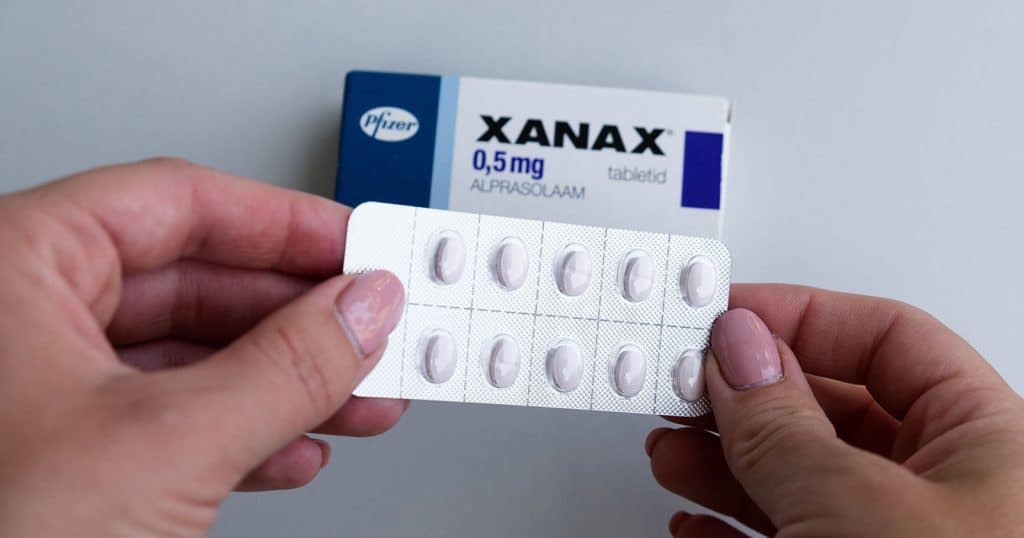Nearly 20 percent of American adults suffer from anxiety, a mental health condition that can be disabling. While a variety of treatments are available for anxiety, medication is often considered a first-line therapy to relieve the stress and fear associated with it. The New England Journal of Medicine estimates that between 1996 and 2013, the number of people taking Xanax and other anti-anxiety drugs nearly doubled.
Today, about 30 million people use them. Unfortunately, while Xanax is highly effective at relieving the physical symptoms of anxiety, it is also highly addictive, and regular users can become dependent on it in just weeks. Xanax dependence and abuse are linked to other issues, including substance use disorders, mental health disorders, and suicidal ideation. If you are struggling with Xanax abuse and addiction, help is available. At Long Island Treatment Center, we are committed to your health and wellbeing with a personalized treatment plan designed to help you achieve sobriety.
Table of Contents
What is Xanax?
Xanax, which is also known by its generic name alprazolam, is a medication that is typically used to treat anxiety disorders but may also be prescribed for insomnia and other issues. It belongs to the class of drugs called benzodiazepines, which includes Valium, Klonopin, and Lorazepam. It works by increasing the effects of gamma-aminobutyric acid, a natural chemical. This reduces nervousness, anxiety, and panic and leaves users feeling calm, relaxed, and a little drowsy.
Although one of the most commonly prescribed drugs in the United States, Xanax is not necessarily the safest. Tolerance to Xanax can develop quickly, which means that users will need to increase their dose or frequency of dosing to achieve their desired effects. If they try to stop taking the medication, they may experience both physical and emotional side effects that include increased anxiety, insomnia, restlessness, and tremors. Withdrawal symptoms indicate that a user has developed physical dependence and may need to step down the dosage when withdrawing to avoid more serious withdrawal symptoms. Both tolerance and withdrawal can be signs of addiction.
Misuse, abuse, and addiction to Xanax are serious issues that can affect your relationships, responsibilities, and other aspects of your day-to-day life. Long Island Treatment Center offers comprehensive support services designed to help you detox, restore your sense of wellbeing, and embrace a healthier, sober new you.
How Much Xanax is Too Much?
When you are taking a potentially addictive medication as prescribed, the line between need and addiction can become blurred. How much Xanax is too much? Are you misusing your medication? Is taking Xanax once a day putting you at risk of addiction?
Although Xanax is highly addictive, dependence does not occur overnight. To become dependent on Xanax, a person must first use it regularly. Those who are at the highest risk of Xanax misuse and addiction are those who are using it daily or long-term. Daily or heavy exposure to Xanax changes the way the nervous system functions, and withdrawal symptoms can occur within hours of the last dose.
Because of this, Xanax is normally only prescribed for the short-term treatment of anxiety, panic disorder, insomnia, and related conditions. It can also help those who are experiencing severe stress. Because of its addictive properties, most doctors limit the amount they prescribe and how long they prescribe it.
Your risk of developing a dependency or addiction to Xanax might be higher if you:
- Have a personal or family history of drug or alcohol abuse or addiction
- Have a personal or family history of mental health disorders
- Are struggling with trauma or stress
- Have little or no social support
Certain genetic or metabolic factors can also predispose you to dependence and addiction.:
Addiction and dependency can even occur in those who are taking the medication exactly as their doctor prescribed. However, abusing or misusing Xanax by taking it without a prescription, using a higher dose than is prescribed, or taking it more often than it is prescribed will also increase the risk.

Signs of Xanax Abuse and Addiction
Dependence and addiction can occur with Xanax even when you are taking it exactly as prescribed. However, misuse or long-term use of Xanax can significantly increase the risk, and addiction can begin in as little as two weeks. According to some estimates, of those who take benzodiazepines daily for six weeks or longer, 40 percent will become addicted.
Recognizing the signs of dependence and addiction can ensure you get the help you need when you need it. These can include:
- Experiencing withdrawal symptoms when stopping or trying to stop Xanax
- “Doctor shopping” to get more prescriptions for Xanax
- Taking more or higher doses of Xanax to get the same effects
- Taking more frequent doses to get the same effects
- Inability to stop Xanax in spite of the desire to stop
- A loss of interest in previously enjoyable activities
- Obsessing about getting and using Xanax
- Legal problems related to using Xanax
- Increasingly risky behaviors about Xanax, such as driving under the influence
You may also find yourself isolating from your friends or family or behaving in uncharacteristic ways in an attempt to get more Xanax or hide the extent of your use.
Side Effects and Withdrawal
Although most often prescribed as an anti-anxiety medication, Xanax can be misused or abused for the “high” it can produce. Xanax is fast-acting and deeply relaxing. Users report feeling calm, drowsy, and quiet after taking a dose, and at first, these are positive sensations. Over time and with increasing tolerance, Xanax users may begin to experience other side effects, which can include depression, aggression, poor impulse control, and psychosis.
Other common side effects of Xanax include:
- Drowsiness and low energy
- Lightheadedness
- Headache
- Dizziness and fainting
- Restlessness and insomnia
- Nervousness and irritability
- Impaired coordination
- Memory impairment and confusion
- Involuntary movement, muscle twitching, and cramps
- Dry mouth
- Constipation or diarrhea
Withdrawal symptoms are also common, and these can be more than merely uncomfortable. If you have developed a dependency, Xanax withdrawal symptoms can be dangerous. Much like alcohol, benzodiazepines such as Xanax affect the GABA receptors. Sudden withdrawal or detoxing can affect the central nervous system significantly, posing a risk to your health and wellbeing.
These symptoms can include:
- Profuse sweating
- Loss of appetite, nausea, and vomiting
- Tremors
- Feelings of anxiety and panic
- Diarrhea
- Paranoia
- Blurred vision
- Muscle pain and weakness
- Heart palpitation
- Seizures
If you suspect that you have Xanax dependency, you should not try to detox on your own but should instead seek the assistance of a medical professional. At Long Island Treatment Center, we offer medically supervised detox programs to address your specific needs and ensure your safety and wellbeing at each stage of the recovery process. A medically assisted detox program not only ensures that you are properly and professionally supported throughout the process but can also help reduce the likelihood of relapse.
How long the withdrawal and detoxification process lasts can vary. However, for most people, the withdrawal symptoms will be at their worst in the first 24 to 72 hours. During this time, you may experience mood swings, nausea, vomiting, insomnia, and an increased heart rate. You will also be at a higher risk for a seizure during this period.
The withdrawal symptoms can continue for up to a week after the last dose although they will generally gradually decrease in severity. You might feel irritable and depressed and suffer from cravings periodically. Your heart may also race. Within two to four weeks of your final dose, the most severe withdrawal symptoms should be done, but you might still suffer occasional symptoms such as anxiety and depression.
With the right treatment, your withdrawal symptoms can be addressed and managed to ensure your comfort and safety.
Treatment for Xanax Abuse and Addiction Near You
Treatment for Xanax abuse and addiction is available, and recovery is possible. A medically assisted and supervised detox program is highly recommended due to the potential for serious side effects during the withdrawal process. You may need to taper or step down your dosage of Xanax during detox or use other medications to manage the side effects of withdrawal. During treatment, you may also use therapy and other treatments to address deeply rooted patterns of behavior and replace them with healthier coping mechanisms.
We offer various treatment programs to help you get back on the road to good health and sobriety. We can help you cultivate invaluable tools that will serve you during the recovery process and as you move forward through your new life of sobriety and wellness. Contact Long Island Treatment Center today to learn more.
Sources:
- https://www.ncbi.nlm.nih.gov/pmc/articles/PMC6007645/
- https://mphdegree.usc.edu/blog/the-next-u-s-drug-epidemic-as-of-2019/
- https://nida.nih.gov/news-events/science-highlight/research-suggests-benzodiazepine-use-high-while-use-disorder-rates-are-low

